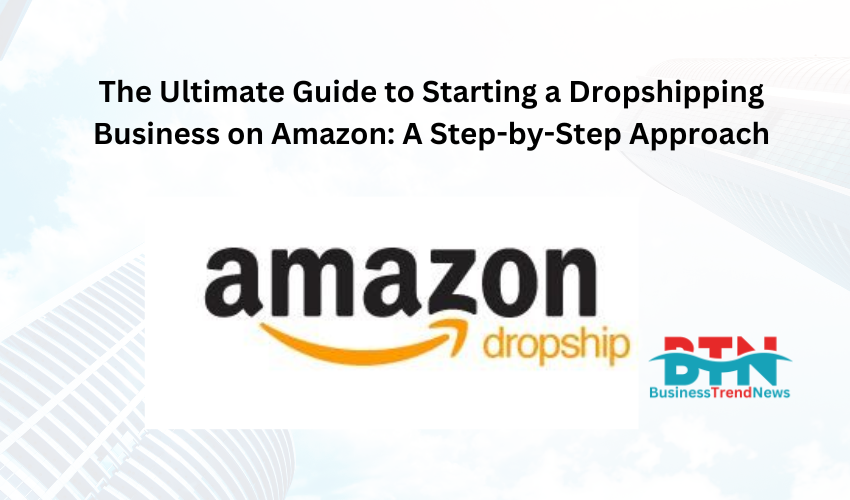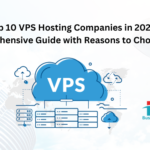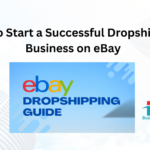![]()
In recent years, dropshipping has emerged as a popular business model, enabling entrepreneurs to sell products without holding inventory. With the vast reach of Amazon, launching a dropshipping business on this platform can be a lucrative venture. This guide will walk you through everything you need to know about starting a successful dropshipping business on Amazon, from understanding the model to choosing suppliers and marketing your products.
What is Dropshipping?
Dropshipping is a retail fulfillment method where a store doesn’t keep the products it sells in stock. Instead, when a store sells a product, it purchases the item from a third party and has it shipped directly to the customer. As a result, the seller doesn’t have to handle the product directly, allowing for a lower-risk, low-overhead business model.
Benefits of Dropshipping
- Low Startup Costs: You don’t need to invest in inventory upfront, which significantly reduces your financial risk.
- Wide Product Selection: You can offer a diverse range of products without worrying about storage.
- Location Independence: You can run your dropshipping business from anywhere, as long as you have an internet connection.
- Scalability: You can easily scale your business by adding more products or increasing marketing efforts without the need for additional resources.
Understanding Amazon as a Selling Platform
Amazon is one of the largest online marketplaces globally, with millions of customers and a reputation for reliability. As a seller on Amazon, you can tap into this vast customer base, but you must understand how the platform works to succeed.
Selling on Amazon: The Basics
- Amazon Seller Account: To start selling, you’ll need to create an Amazon Seller account. You can choose between two plans: the Individual plan (no monthly fee but a $0.99 fee per item sold) and the Professional plan (monthly fee of $39.99 but no per-item fee).
- Product Listing: You’ll need to create product listings that include product descriptions, images, and pricing. Optimizing your listings for SEO is crucial to improve visibility.
- Fulfillment by Amazon (FBA) vs. Dropshipping: While Amazon offers its fulfillment service (FBA), dropshipping allows you to sell products without holding inventory. It’s essential to understand the differences and choose the right model for your business.
Steps to Start a Dropshipping Business on Amazon
Step 1: Conduct Market Research
Before diving into dropshipping, conduct thorough market research to identify profitable niches and products. Consider the following:
- Identify Trends: Use tools like Google Trends, Amazon Best Sellers, and social media platforms to identify trending products.
- Analyze Competition: Check existing sellers in your chosen niche. Evaluate their product offerings, pricing, and customer reviews.
- Find Your Target Audience: Understand who your potential customers are and what they are looking for.
Step 2: Choose a Niche
Once you’ve conducted market research, choose a niche that interests you and has demand. Focus on the following criteria when selecting a niche:
- Profit Margins: Look for products that allow for reasonable profit margins (ideally, 20% or more).
- Product Size and Weight: Consider dropshipping lighter products, as shipping costs can eat into your profits.
- Competition: Choose a niche with moderate competition to ensure you can carve out a space for your brand.
Step 3: Find Reliable Suppliers
Finding reliable suppliers is crucial for your dropshipping business. You can use various platforms to connect with suppliers:
- AliExpress: A popular platform for dropshippers, offering a wide range of products and suppliers.
- Oberlo: A dropshipping app that integrates with Shopify and allows you to find and import products.
- Wholesale Central: A directory of wholesale suppliers that can connect you with manufacturers.
- Amazon itself: You can use Amazon to source products from wholesalers or distributors who are open to dropshipping.
Step 4: Create Your Amazon Seller Account
Now that you have chosen your niche and suppliers, create your Amazon Seller account:
- Sign Up: Go to the Amazon Seller Central page and click “Register now.”
- Provide Information: Fill out the required information, including your business name, email address, and tax information.
- Choose Your Selling Plan: Decide between the Individual and Professional plans based on your expected sales volume.
Step 5: List Your Products
Once your account is set up, it’s time to create product listings:
- Product Titles: Use relevant keywords in your product titles to improve search visibility.
- Descriptions: Write clear, concise, and informative product descriptions that highlight the features and benefits.
- Images: Use high-quality images that showcase your products from different angles. Ensure that you have the right to use these images or get them from your supplier.
- Pricing: Set competitive prices while ensuring you maintain a healthy profit margin.
Step 6: Optimize Your Listings for SEO
Optimizing your product listings for SEO is crucial for visibility on Amazon:
- Keyword Research: Use tools like Helium 10, Jungle Scout, or Amazon’s search bar to find relevant keywords for your products.
- Incorporate Keywords: Include your target keywords in your product titles, descriptions, and bullet points.
- Encourage Reviews: Positive reviews can improve your ranking on Amazon. Encourage satisfied customers to leave reviews.
Step 7: Manage Orders and Customer Service
When you start receiving orders, manage them efficiently:
- Order Fulfillment: Once an order is placed, notify your supplier to ship the product directly to the customer.
- Track Shipments: Keep track of shipments and provide customers with tracking information.
- Customer Service: Respond promptly to customer inquiries and address any issues that arise, such as returns or refunds.
Step 8: Market Your Products
To drive traffic to your listings, consider implementing marketing strategies:
- Amazon Advertising: Use Amazon’s advertising platform to create sponsored product ads to increase visibility.
- Social Media Marketing: Promote your products on social media platforms like Instagram, Facebook, and Pinterest to reach a wider audience.
- Email Marketing: Build an email list to engage with customers and promote new products or discounts.
Step 9: Analyze and Optimize Your Business
Continuously monitor your business performance and make improvements:
- Sales Analytics: Use Amazon’s analytics tools to track your sales, conversion rates, and customer behavior.
- Optimize Listings: Regularly update your product listings based on performance data and customer feedback.
- Expand Your Product Range: As you grow, consider adding new products to your offerings to diversify your income streams.
Challenges of Dropshipping on Amazon
While dropshipping on Amazon can be lucrative, it’s essential to be aware of the challenges you may face:
- Competition: The dropshipping market is competitive, requiring you to differentiate your brand.
- Shipping Times: Longer shipping times can lead to unhappy customers. Consider suppliers with faster shipping options.
- Quality Control: Since you don’t handle the products directly, quality control can be challenging. Choose reliable suppliers with good reviews.
- Amazon Policies: Familiarize yourself with Amazon’s policies to avoid account suspension or other penalties.
Conclusion
Starting a dropshipping business on Amazon can be a rewarding endeavor if done correctly. By following this step-by-step guide, you can navigate the challenges and opportunities in the dropshipping landscape. Remember to conduct thorough research, choose reliable suppliers, and focus on providing excellent customer service. With dedication and strategic planning, you can build a successful dropshipping business on Amazon and achieve your entrepreneurial dreams.



